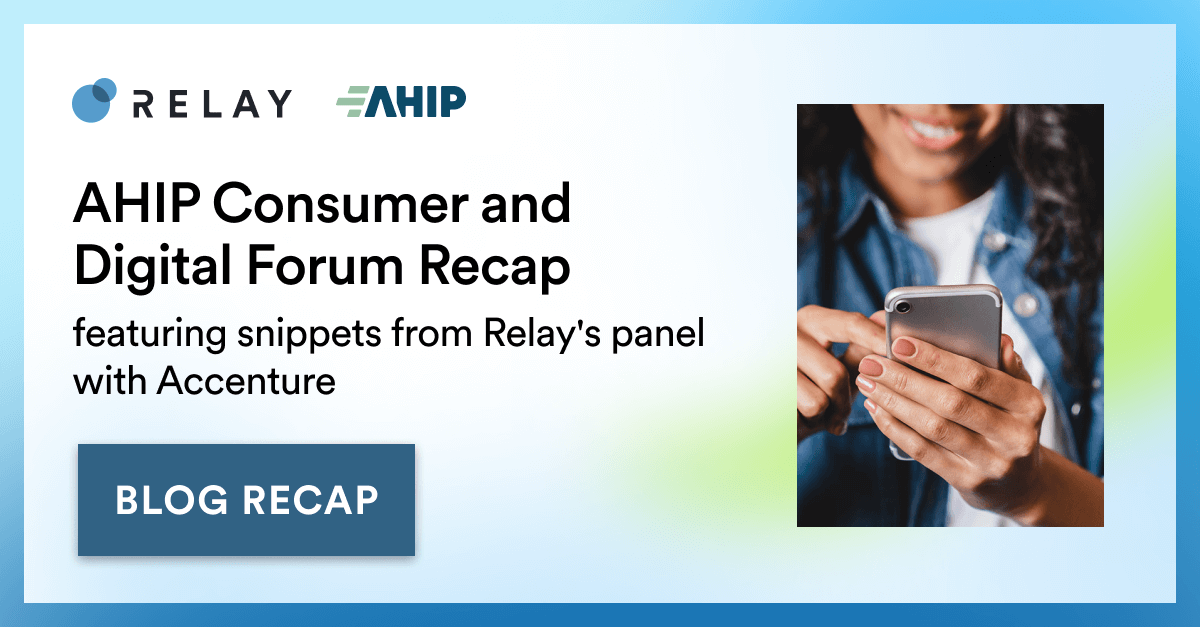
Blog
Building A Medicare Communications Strategy
By 2030, all Baby Boomers will be above the age of 65. Businesses in both the public and private sector face new challenges as this population ages, especially in healthcare. Medicare and Medicare Advantage (MA) providers must develop Boomer-friendly communication strategies, especially for those trailing-edge Boomers, who fall between the ages of 55-64 and are enrolling in Medicare now. By taking advantage of new technologies to streamline processes and communicate with this population, Medicare and MA providers can more effectively reach this population while differentiating themselves in an increasingly competitive space.
As the world moves full steam ahead toward digital everything, many assume that Boomers won’t be able to keep pace with advancements in healthcare technology. But that’s simply not true.
How the Medicare population communicates today
According to Pew Research Center data, 68% of Baby Boomers own smartphones and that number continues to consistently rise. Not only that, but this generation’s level of comfortability with smartphones and digital technology has risen as well. Text messaging has surpassed email as the tool most used to stay connected and 73% of people over 70 say they text on a regular basis. Beyond text messaging, though, 35% of younger Boomers also expressed an interest in using technology to help them access care and 28% have already used technology to monitor health issues.
This is great news for Medicare providers because it means that mobile is a completely viable option for communicating with members and engaging in a way they’re already comfortable with.
Healthcare communication preferences among seniors
Since the pandemic, Boomers have been quick to adopt smartphone usage for managing their health. In a Relay-hosted webinar about the topic of aging-in, Ian Gordon, Independent Healthcare Advisor, noted that, “through COVID, everyone has had to learn how to use technology” and the Boomer population is no exception. Research shows they’re both ready and willing – and some even feel their healthcare companies aren’t doing nearly enough to engage them properly.
Aging in place is extremely important to the Boomer population. In fact, 61% of elderly Americans would prefer to age in their own homes rather than in an assisted care facility or in a family members’ home. Seniors are much more willing to embrace services and technologies that allow them to maintain their independence, and today, nearly 30% already manage or receive medical care on their smartphones.
So, what kind of engagement is the Medicare population interested in? 94% would like more support between doctors visits and 88% see immense value in medication reminders to stay on top of their health. These types of communications are highly beneficial to both members and health payers, resulting in fewer gaps in care and better outcomes.
But there’s even more that healthcare companies can be doing to support their Medicare members. Personal, timely, relevant content and reminders feel meaningful and tailored to the individual, especially those with chronic conditions. Health payers need to prioritize personalized communications because it makes the Medicare population feel cared for. According to a recent study, 33% recognized a lack of personalization in their health insurers communications that they’d likely benefit from. They say that healthcare providers either don’t communicate recommendations that are relevant to their specific needs or they don’t do it well.
Additionally, In the case of digital technology usage for this population, simplicity is key. From the same Relay-hosted webinar, Lisa Franklin, Director of Product and Marketing Strategy (Government Program) at CareFirst BlueCross BlueShield said, “I think we throw a lot of different digital elements at folks: go to a website, use an app, asking them to create a login so that they can see all of their claims information, explanation of benefits, etc. So I think, as we start to look at all those different avenues, it’s simplifying that.” While it’s great to offer a variety of channels for members to engage, the more streamlined and simplified the channel, the higher likelihood members will actually use it.
A strategic approach for Medicare members
Effective communication strategies for the Medicare community don’t differ much from the general population of adults. To start, health payers should place the most focus on personal, timely support and digital solutions designed to help the elderly manage their health and age in place by establishing trust. And when it comes to the proper channels to deliver these communications, text messaging and mobile experiences are not only proven to work – Medicare members have expressed a desire for this type of engagement.
Want to learn how Relay can help with reaching and engaging with your Medicare population? Reach out to us here.
